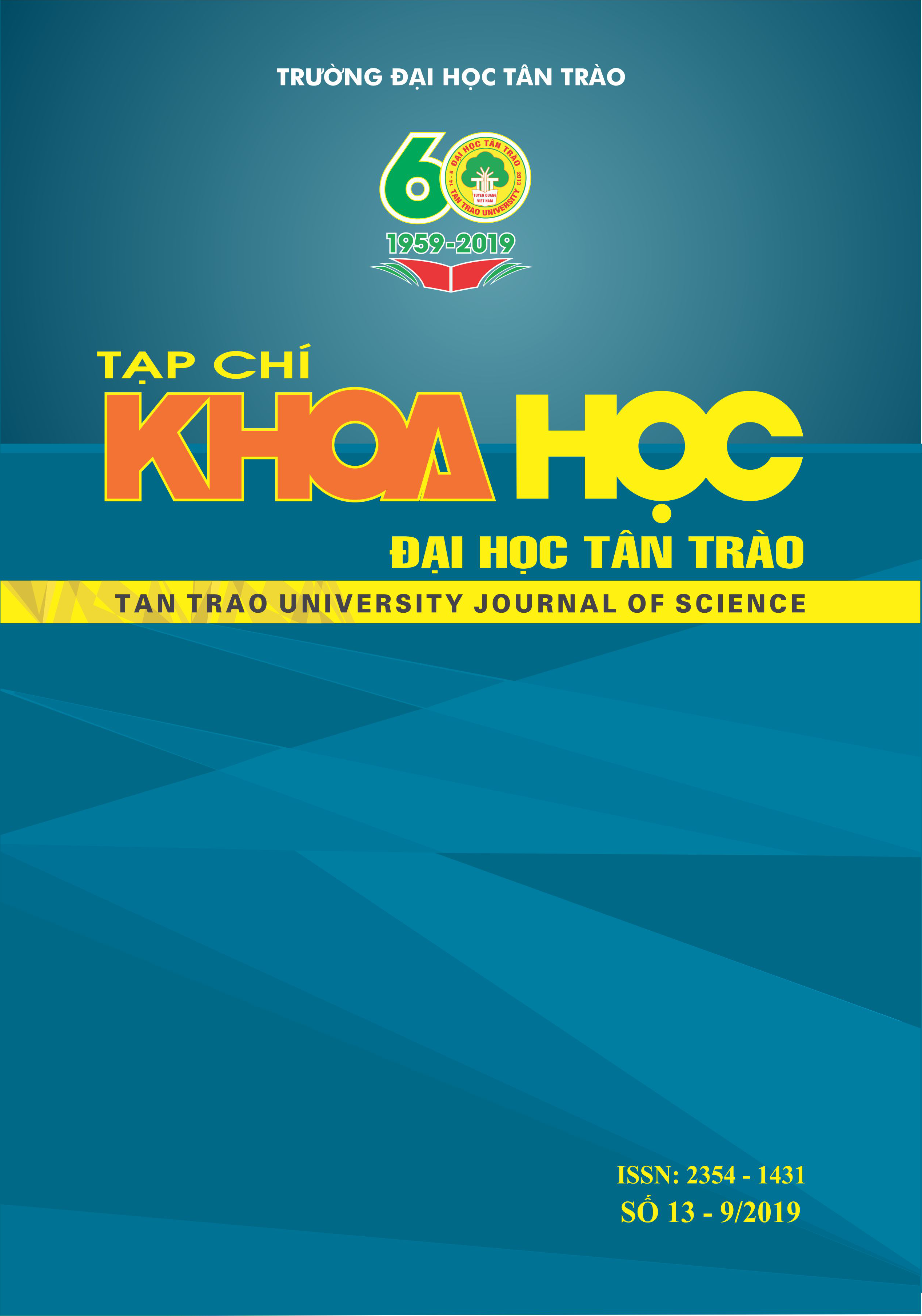Exposure-based treatment on public speaking self-efficacy and competence
Từ khóa:
Public speaking self-efficacy, sources of self-efficacy, exposure-based treatment, public speaking competence, public speaking instructionTóm tắt
This study aimed to examine exposure-based treatment, i.e. various ungraded speech activities, as a pedagogical strategy to heighten public speaking self-efficacy and competence. Also, it aimed to determine the influence of mastery experience, vicarious experience, social persuasions, and physiological states as sources of self-efficacy before and after.
Quasi-experimental, one group pretest-posttest design was used to meet the objectives of the study. Furthermore, it was conducted as a single-blind experiment. The seven participants answered scales to determine their public speaking self-efficacy and to determine how influential the sources were. An evaluation of images activity was conducted to determine public speaking competence. All instruments were administered twice: before and after the exposure-based treatment. The data were analyzed using mean, scoring and descriptive scales, paired-samples T-test, Pearson r, and multiple regression analysis.
The findings of the study revealed that the participants had average self-efficacy before and after; vicarious experience was the most influential source before and after; the participants had proficient public speaking competence after. Moreover, there is a significant difference between public speaking self-efficacy before and after; there is a highly significant difference between public speaking competence before and after; there is a significant difference between and social persuasions before and after. Furthermore, there is no significant relationship between public speaking self-efficacy and competence. Lastly, the sources of self-efficacy are not significant predictors of public speaking self-efficacy.
Tải xuống
Tài liệu tham khảo
1. Alawiyah, T. (2018). Speaking Self-Efficacy and EFL Student Teachers’ Speaking Achievement. Edukasi Jurnal Pendidikan dan Pengajaran. 5(1), 87-96.
2. Al-Tamimi, N. O. M. (2014) Public Speaking Instruction: Abridge to Improve English Speaking Competence and Reducing Communication Apprehension. International Journal of Linguistics and Communication. 2(4), 45-68. http://dx.doi.org/10.15640/ijlc.v2n4a4
3. Arslan, A. (2012). Predictive Power of the Sources of Primary School Students' Self-Efficacy Beliefs on Their Self-Efficacy Beliefs for Learning and Performance. Educational Sciences: Theory and Practice. 12(3), 1915-1920.
4. Ballo-allo, D. (2010). Self-efficacy in English: A comparison of first year and fourth year students’ language self-efficacy in the Philippines and the factors affecting self-efficacy. University of Oslo. Oslo, Norway.
5. Bandura, A. (1994). Self-efficacy. Stanford University. Stanford, California.
6. Dwyer, K. & Fus, D. (2002). Perceptions of communication competence, self-efficacy, and trait communication apprehension: Is there an impact on basic course success? Communication Research Reports, 19, 29-37.
7. Finn, A., Sawyer, C., & Schrodt, P. (2009). Examining the Effects of Exposure Therapy on Public Speaking State Anxiety. Communication Education. 58(1), 92-109, doi: 10.1080/03634520802450549
8. Herbein, E. et al. (2017). Fostering elementary school children’s public speaking skills: A randomized controlled trial. Learning and Instruction. 55(2018), 158-168. https://doi.org/10.1016/j.learninstruc.2017.10.008
9. Kadian-Baumeyer, K. (n.d.). What Is Public Speaking and Why Do I Need to Do It?. Retrieved February 8, 2018 from https://study.com/academy/lesson/what-is-public-speaking-and-why-do-i-need-it.html.
10. Paradewari, D. (2017). Investigating Students’ Self-Efficacy of Public Speaking. International Journal of Education and Research. 5(10), 97-108.
11. Warren, J. (2011). The Relationship between Service Learning and Public Speaking self-efficacy: Toward Engaging Today’s Undergraduates. University of Kentucky. Lexington, Kentucky.
12. Zekeri, A. (2004). College Curriculum Competencies and Skills Former Students Found Essential to their Careers. College Student Journal. 38(3), 412.
Tải xuống
Đã Xuất bản
Cách trích dẫn
Số
Chuyên mục
Giấy phép

Tác phẩm này được cấp phép theo Giấy phép Quốc tế Creative Commons Attribution-ShareAlike 4.0 .
Bài báo được xuất bản ở Tạp chí Khoa học Đại học Tân Trào được cấp phép theo giấy phép Ghi công - Chia sẻ tương tự 4.0 Quốc tế (CC BY-SA). Theo đó, các tác giả khác có thể sao chép, chuyển đổi hay phân phối lại các bài báo này với mục đích hợp pháp trên mọi phương tiện, với điều kiện họ trích dẫn tác giả, Tạp chí Khoa học Đại học Tân Trào và đường link đến bản quyền; nêu rõ các thay đổi đã thực hiện và các nghiên cứu đăng lại được tiến hành theo cùng một bản quyền.
Bản quyền bài báo thuộc về các tác giả, không hạn chế số lượng. Tạp chí Khoa học Tân Trào được cấp giấy phép không độc quyền để xuất bản bài báo với tư cách nhà xuất bản nguồn, kèm theo quyền thương mại để in các bài báo cung cấp cho các thư viện và cá nhân.
Mặc dù các điều khoản của giấy phép CC BY-SA không dành cho các tác giả (với tư cách là người giữ bản quyền của bài báo, họ không bị hạn chế về quyền hạn), khi gửi bài tới Tạp chí Khoa học Đại học Tân Trào, tác giả cần đáp ứng quyền của độc giả, và cần cấp quyền cho bên thứ 3 sử dụng bài báo của họ trong phạm vi của giấy phép.


